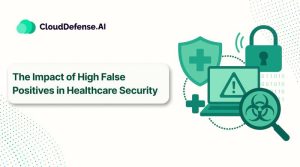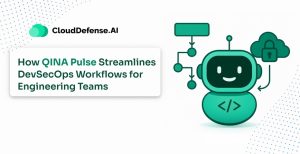In a world where remote work has become the norm, TeamViewer has been a go-to tool for millions. But now, this popular remote access software is making headlines for all the wrong reasons. On June 26, 2024, TeamViewer dropped a bombshell: their corporate network had been breached.
This isn’t just another run-of-the-mill cyber incident. We’re talking about a company that’s the backbone of remote access for over 600,000 customers worldwide. So when TeamViewer says they’ve been hacked, it’s time to sit up and pay attention.
But here’s where it gets really interesting—and potentially scary. While TeamViewer is trying to reassure us that our data is safe, whispers in the cybersecurity world are pointing fingers at a notorious Russian hacking group. APT29, also known as Cozy Bear, might be behind this attack. Yeah, the same guys who’ve been giving tech giants like Microsoft and the U.S. government headaches for years.
Details of the Breach
TeamViewer posted an update to its Trust Center, saying that on Wednesday, June 26, 2024, its security team spotted an irregularity in its “internal corporate IT environment.” That’s corporate speak for “We got hacked.”
Now, TeamViewer insists this is just a corporate problem. They’re claiming their product environment—you know, the actual software we all use—is totally separate and unaffected. The same goes for customer data, apparently. But let’s be real. We’ve heard that line before from other companies, and it hasn’t always held up.
They are working together with a team of “globally renowned cyber security experts” to investigate and implement necessary remediation measures. But details are pretty thin on the ground right now. We don’t know how the attackers got in, what they accessed, or how long they were poking around before someone noticed.
TeamViewer is promising to keep us in the loop as they learn more. But here’s a thing – the page where they posted this update? It’s got a special tag “<meta name=”robots” content=”noindex”>” that tells search engines not to index it. It makes us wonder if they really want this information out there.
So while TeamViewer says it’s just an internal issue, the reality is we don’t know the full scope yet. And given how widely used TeamViewer is, even a “small” breach could have big ripple effects.
Potential APT Involvement
While TeamViewer is playing it cool, some big names in cybersecurity are raising alarm bells. NCC Group, a well-known IT security firm, have put out an alert saying TeamViewer has suffered a “significant compromise” by an APT group. For those not in the know, APT stands for Advanced Persistent Threat—these are the big-league hackers, often backed by nation-states.
But it gets even more specific. Health-ISAC, a group that shares threat intel in the healthcare sector, dropped a bombshell. They’re saying the Russian hacking group APT29, also known as Cozy Bear, is actively exploiting TeamViewer and advised users to review logs for any unusual remote desktop traffic. This isn’t just some random group—we’re talking about the crew linked to Russia’s Foreign Intelligence Service.
APT29 has an alarming track record. They’re the ones behind the SolarWinds hack in 2020 that had the U.S. government scrambling. They’ve hit the Democratic National Committee, and more recently, they’ve been linked to breaches of tech giants like Microsoft and HPE.
Now, it’s important to note that TeamViewer hasn’t confirmed any of this APT29 stuff. The timing of these alerts from NCC and Health-ISAC lines up with TeamViewer’s disclosure, but we can’t say for sure if they’re all talking about the same incident.
What we do know is this: if APT29 is involved, this isn’t just some opportunistic hack. These guys are after high-value targets and sensitive information. And given TeamViewer’s widespread use in both personal and corporate settings, the potential impact here is huge.
Implications and Concern
First off, let’s consider TeamViewer’s reach. It is used by 600,000 customers, from common employees working from home to massive corporations managing their IT infrastructure. So when TeamViewer gets hit, the potential fallout is huge.
Now, TeamViewer is saying their product environment and customer data are safe. But here’s the thing – even if that’s true right now, this breach could be a foot in the door for attackers. If they’ve compromised TeamViewer’s corporate network, who’s to say they can’t use that access to worm their way into the product side of things?
Remember, TeamViewer has been breached before. Back in 2016, TeamViewer was hit with a breach they initially tried to downplay. They eventually admitted it was linked to Chinese hackers using something called the Winnti backdoor. They claimed no data was stolen then, but it still rattled users’ confidence.
The involvement of APT29 makes this even more concerning. These guys aren’t after quick wins or easy money. They’re in it for the long haul, often aiming to steal sensitive data or set up long-term access to networks. If they’re really behind this, it could be part of a much larger espionage operation.
What Can Be Learned from the Breach?
Firstly, this incident is a stark reminder that no company is immune to cyberattacks. TeamViewer is a big player in the tech world, and they still got hit. It just goes to show that cybersecurity is an ongoing battle, not a one-and-done deal.
The Importance of Segmentation
One big takeaway is the importance of network segmentation. TeamViewer claims their corporate network is separate from their product environment. If that’s true, it’s a smart move that might have saved their users from direct impact. It’s a lesson for other companies – don’t put all your eggs in one basket.
The Need for Constant Vigilance
This isn’t TeamViewer’s first rodeo with breaches. The fact that they’ve been hit again (and potentially by a different nation-state group) shows that past security improvements aren’t enough. Cybersecurity requires constant updates, monitoring, and improvements.
APT Involvement
The potential involvement of APT29 is a wake-up call about the sophistication of today’s threats. We’re not just dealing with opportunistic hackers anymore. Companies need to be prepared for attacks from well-funded, highly skilled adversaries.
User Responsibility
While the breach is on TeamViewer, it’s a wake-up call for users too. It underscores the importance of using additional security measures like two-factor authentication, regularly updating software, and monitoring for unusual activity. No matter how secure a tool claims to be, users need to stay proactive about their own security.
Being Proactive with Modern Security Solutions
This breach underscores the need to stay ahead of the curve with security. Here’s what that might look like:
- Zero Trust Architecture: Don’t trust anything by default, even if it’s inside your network. Always verify.
- Invest in advanced security solutions: Use advanced tools that can spot unusual patterns faster than humans can.
- Regular Penetration Testing: Don’t wait for the bad guys to find your weak spots. Look for them yourself.
- Security Awareness Training: Your employees are often your first line of defense. Make sure they’re well-trained.
- Cloud Security Posture Management: As more operations move to the cloud, make sure your cloud infrastructure is locked down tight.
Could This Breach Have Been Prevented?
Yeah, it’s pretty likely this breach could have been avoided. So, in today’s world, with all the advanced security tools we have, a company like TeamViewer should be able to stop this kind of thing before it happens.
Being reactive just doesn’t cut it anymore. They need to be proactive and always a step ahead of these hackers. There are some really solid cloud security solutions out there now that can spot weird behavior before it turns into a full-blown breach.
Take those modern AI-powered security platforms, for example. They’re always watching, learning what’s normal and what’s not. If something fishy starts happening, they flag it right away.
And, what about regular penetration testing? If they’d constantly been poking at their own defenses, they might’ve found and fixed the weak spots before the bad guys did.
The bottom line is, that in 2024, we’ve got the tech to make these kinds of breaches way less likely. TeamViewer’s a big player in the remote access domain. They should’ve been all over this stuff, using every tool in the box to keep their systems locked down tight.
Sure, no security practice is too perfect given the attack sophistication, but with the right proactive approach and the latest tools, they could’ve made life a whole lot harder for whoever broke in.
Final Words
This TeamViewer breach is a wake-up call for the entire tech industry. It’s not just about one company anymore – this could happen to anyone. We’re dealing with sophisticated attackers who are always upping their game. The risks are real, and they’re growing every day. Companies can’t afford to be complacent. It’s time to get serious about cybersecurity. Companies must urgently reassess their security strategies, embracing cutting-edge solutions like Clouddefense.AI to stay ahead of evolving threats.
The future of digital security lies in proactive, AI-driven approaches that can detect and neutralize threats in real time. Because let’s be clear – if a tech giant like TeamViewer can be breached, no one is safe. The next attack could be aimed at you, and by then, it might be too late.
Source of Original Statement: TeamViewer’s initial disclosure of the breach was published in their Trust Center.







